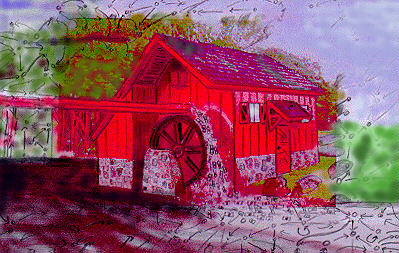The following Monday at 8:15 in the morning Lisa and I were in the J. Edgar Hoover Building on Pennsylvania Avenue in Washington D.C. The meeting wasn’t supposed to begin until 9:00 but neither one of us are the type that likes to cut these things close and if the people at this meeting were even half as important as Agnes said then it did not seem like it would be wise to keep them waiting. Not that I was at all sure that they would even bother waiting for us if we were late. That was another reason for being on time — I didn’t want to miss anything.
Lisa and I had flown in together that morning. Our flight landed at National Airport at about 7:30. It was the earliest flight we could get out of Chicago.
Lisa used to have a friend that worked in D.C. and she had visited the city several times in the past so I left all the travel arrangements to her (I had never been there before). Lisa had no trouble finding the “Metro”, Washington’s name for the subway. Lisa informed me that my startled reaction to the cleanliness of the subway cars and the stations was typical of American tourists in D.C. I was used to the Chicago subway, which like any other American subway except the Metro, featured cars with the full spectrum of modern American graffitee, everything from hastily scrawled profanities to elobarate still-life painted with painstaking attention to detail.
Not only was the cleanliness of the subway system impressive, but it was nice to see that our nation’s capital uses a token system based upon magnetic-strip cards. The cards can be purchased in nearly any denomination from vending machines. The rates vary depending upon how far one is traveling. Magnetic-strip readers at the turn-styles automatically debit the cards appropriately based upon the station of origin and the destination. I have no idea if they use any sort of cryptographic algorithms to thwart forgeries and tampering. Probably not. Even so, the system is fast and convenient; nice.
We took the “yellow” line to L’Enfant Plaza, a station where nearly all of the lines meet. There we switched to the blue line, which we took to Federal Triangle. Lisa explained that we could have picked up the blue line at the airport and avoided the need to switch trains, but it is faster to do it as we had because the blue line takes a very circumspect route from National Airport to Federal Triangle.
The Federal Triangle Metro station is underground, beneath 12th Street and Pennsylvania Avenue. I inserted my token card into the turn-style and it promptly popped out of the return slot with a soft phlifft. I followed Lisa up the escalators to street level.
We had no trouble finding the FBI building; it was clearly labeled as such with a large sign on the lawn. The building itself was on Pennsylvania Avenue between 9th and 10th streets, placing it near the mid-point between the White House on one end of Pennsylvania Avenue and the Capital Building on the other. As it turns out, the walk from the L’Enfant Plaza metro station would not have been any longer than the walk from Federal Triangle; we had been fooled by the name of the latter into believing it would be the closer of the two.
We had more trouble finding the conference room than we did the building. After receiving our visitor clearances Lisa and I spent several minutes wandering the halls looking for the room where the conference was supposed to be. We hadn’t been given a room number and nobody had come out to escort us. I was a little surprised at the lack of escort, not because I expected better hospitality, but rather because I expected tighter security. We knew only that the meeting was to take place at 9:00 and was supposed to be somewhere on the third floor. We eventually met up with Jonny and he showed us to the conference room.
It was a mid-sized room with seating for about forty. The room was longer from front-to-back than it was wide, with a doorway near the front and a second door near the rear. We entered from the rear entrance. There were long tables that were fixed to the ground and ran nearly the full width of the room. The chairs were also fixed to the ground, but were free to swivel. There were about seven chairs per row and about ten rows. The front of the room had a wide empty space between the front wall and the first row of seats. Part of this space was filled by a lecturn positioned slightly off-center, closer to the left side of the room, where windows lined the wall. The room reminded me of the classroom where I had taken Complexity Theory at Princeton.
Most of the second and third row were already filled. Nobody had chosen to sit in the first row yet, and not enough people had arrived to fill more than two rows.
Lisa and I chose seats at the far end of the fourth row, near the windows. Jonny sat down with us for a moment but almost immediately popped out of his chair, excused himself, and hurried off to talk to a group of three men that had just entered the room through the door at the front. I recognized one of these men from television news reports; he was Louis Weld, the director of the CIA.
